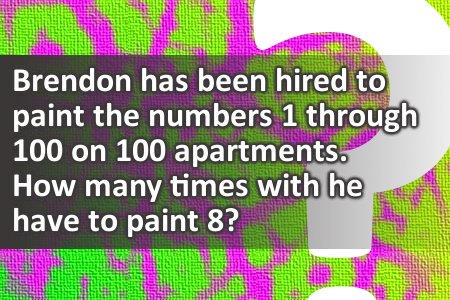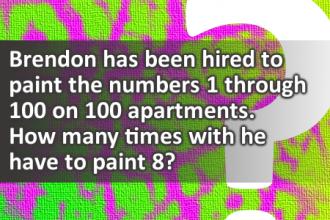Brendon has been hired to pa...
Brendon has been hired to paint the numbers 1 through 100 on 100 apartments. How many times with he have to paint 8?
World Hypertension Day jokes
World Hypertension Day is observed every May 17th in order to raise awareness and promote hypertension prevention, detection and control. Raise awareness with these jokes.
Why did the skeptic suffer from high blood pressure?
He was taking everything with a grain of salt.
My doctor just prescribed me blood pressure medication
it was a tough pill to swallow
Russian health tips
-"For better digestion ,I drink beer, for low blood pressure I drink red wine, for high blood pressure Cognac and for colds Vodka. "
-"And what about water?"
-"I don't think I ever had such an illness....
A man walks into a hospital ward and starts inspecting all of the bed charts.
A doctor notices this and says, "Excuse me sir, but what are you doing?"
The man ignores the doctor and continues, now taking everyone's blood pressure.
"Sir, I'll ask you again", says the doctor, "why are you here and what are you doing?"
Ignoring the doctor again, the man then begins to take everyone's blood and starts processing it through the hospital's examination equipment.
"Right!" Shouts the doctor. "Now you're testing my patients!"

